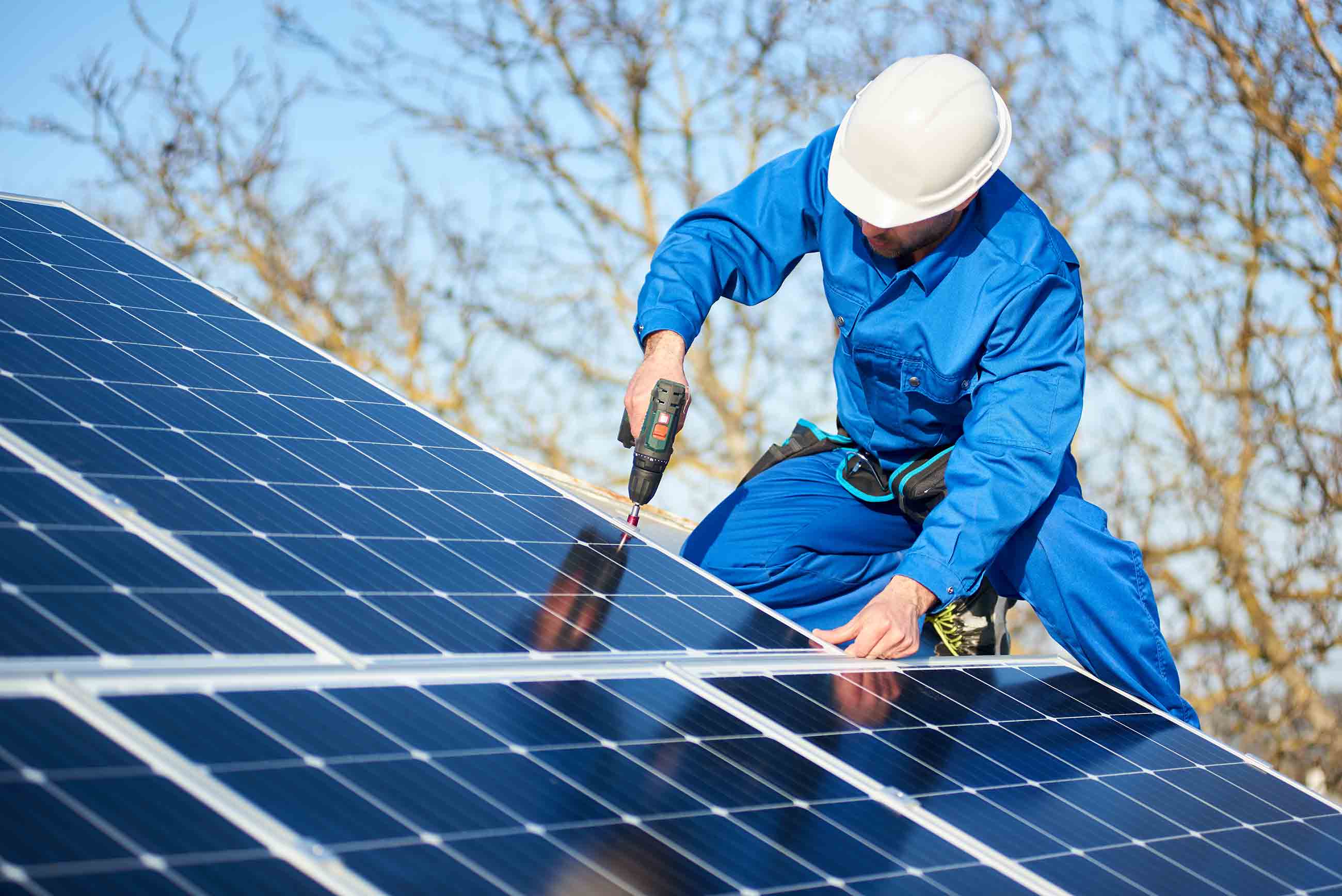Solar installation
Solar installation – i.e. the fitting and commissioning of a photovoltaic system – should always be carried out by a professional. Electricians and solar technicians are qualified to do this. The reason for this is that there are various things to be considered when installing solar panels: installing a solar system requires special safety precautions, as solar panels are generally fitted to the roof or façade. Furthermore, the fitting and commissioning of solar systems is subject to the Electricity Supply Act (ESA) and the Energy Act (EnA). Commissioning is also subject to approval. Proper solar installation is thus a prerequisite for a solar system to be compliant with the law. The installation of a solar system is an important component of energy-oriented refurbishment.
Solar panel fitting
The orientation of the solar cells plays a decisive role when fitting solar panels: ideally the PV modules should face south and be inclined by around 30 degrees. However, sufficient electricity can still be produced even if the solar panels are not fitted perfectly: for example, pointing the panels to the west only reduces the output by around 15 percent. However, it is important that as far as possible the solar panels are not shaded at any time – for example by trees or neighbouring buildings. Electricians and solar technicians can calculate the amount to be expected precisely by means of a computer simulation. This enables the solar system to be optimally installed.
Fitting a solar system to a flat roof is also not a problem. The installation is carried out by means of a mounting frame used to orient the solar system optimally towards the sun.
Solar cells: what they do
The best solar cells available on the market these days achieve a level of efficiency of up to 25%. These are so-called gallium arsenide (GaAs) cells. Normally, however, PV modules consist of monocrystalline or polycrystalline cells. The former have a level of efficiency of up to 22% and the latter of up to just under 20%. The difference is also reflected in the price: solar systems with monocrystalline cells are more expensive than those with polycrystalline cells. Which are more suitable differs from house to house. In practice it comes down to a good cost-benefit ratio. It often pays off to install solar panels with monocrystalline cells on smaller roofs. Somewhat less efficient but more large-scale solar systems are also viable if you have more space available.
PV roof installation
PV roof installation can be carried out by means of two types of installation: on-roof and in-roof mounting. On-roof mounting is customary when installing a solar system on an existing roof. In this case the photovoltaic modules are mounted on the existing roof. The roof thus continues to function as a protective element against rainwater, snow and hail and the photovoltaic modules have no sealing properties.
In-roof mounting is an attractive option for roofs to be newly constructed. It is aesthetically appealing, as in this case the solar cells also assume the function of roof covering. There are now even solar modules that look deceptively similar to bricks and shingles. The solar installation of roofs covered in this way is barely noticeable any more.
Photovoltaic installation with storage
A photovoltaic installation with storage enables the best possible use to be made of self-generated electricity, as the Federal Government has abolished feed-in remuneration at cost (CRF) for small photovoltaic systems. However, battery storage systems are now available for single-family dwellings. They enable you to consume the self-generated solar power yourself – even when the sun is not shining. For example, solar power can be used to operate the heat pump or air conditioning.
Funding for the installation of a photovoltaic system
The Federal Government subsidises solar systems for single-family dwellings – i.e. small systems – by means of a one-off investment grant. This can be used to cover up to 30 percent of the investment costs for the installation of a photovoltaic system. The exact funding amount is calculated from a basic contribution plus a performance contribution per installed kilowatt. Owners of photovoltaic systems with output of less than 100 kilowatts only receive the funding contribution once the system is commissioned and not in advance.
Installation of solar panels: possible throughout Switzerland
Solar systems can be installed just as easily in Bülach and Thun as in Basel, Zurich or Solothurn, as there are now electricians and solar technicians specialising in this throughout Switzerland. It also makes no difference in which region the solar panels are installed – whether in Ticino or Northern Switzerland: a professionally planned solar system can be used practically anywhere to produce electricity in a cost-effective and environmentally friendly manner.
Find local partners now without obligation for...
Do not hesitate and let us know
We are there for you. Feel free to contact us directly by E-Mail with your questions or concerns. We will try to reply immediately. We are available from: Monday to Friday 08:00 – 18:00




